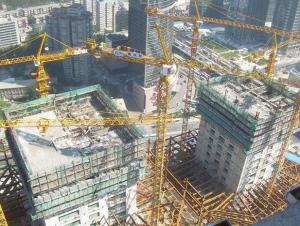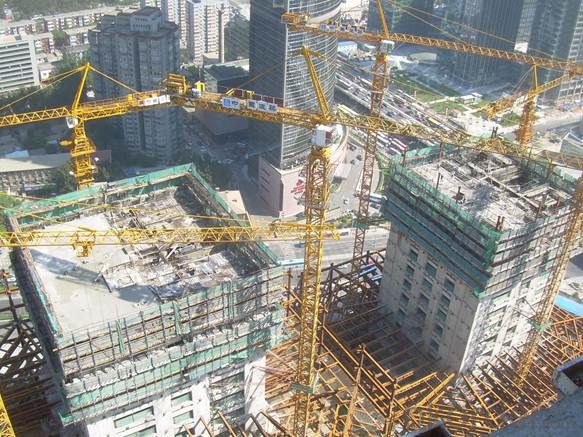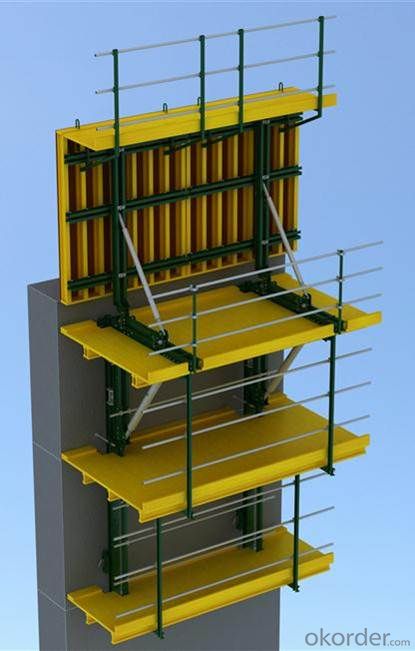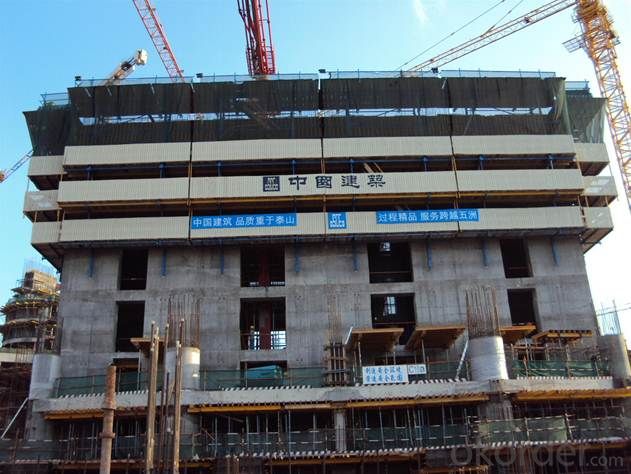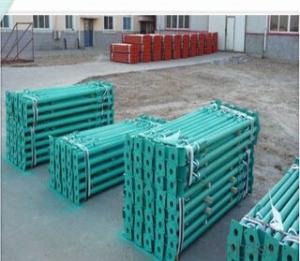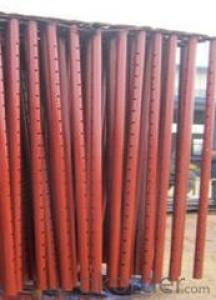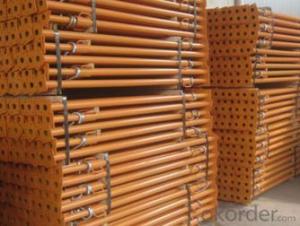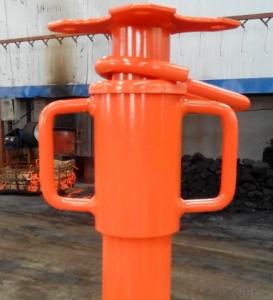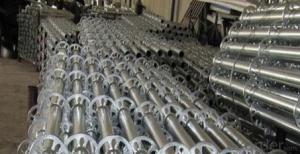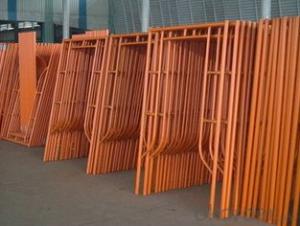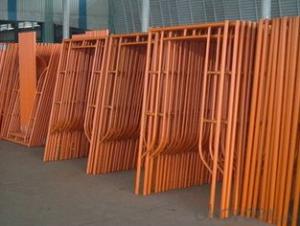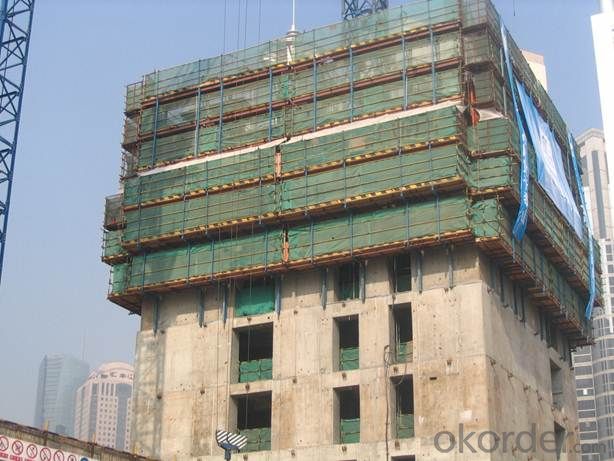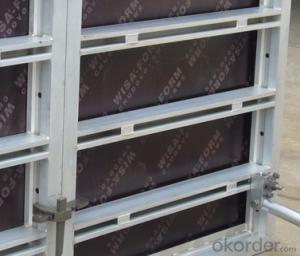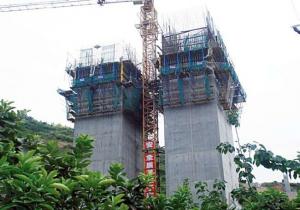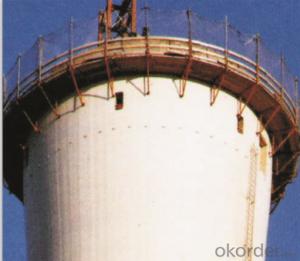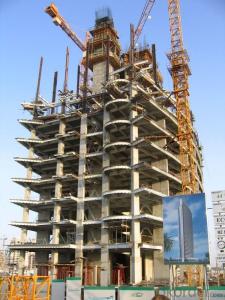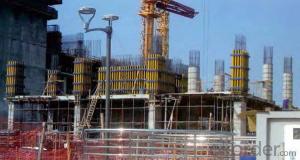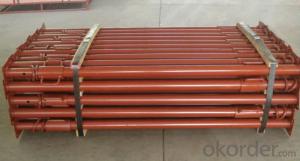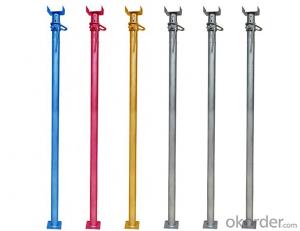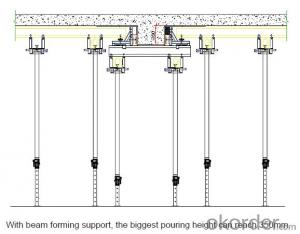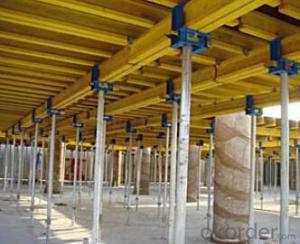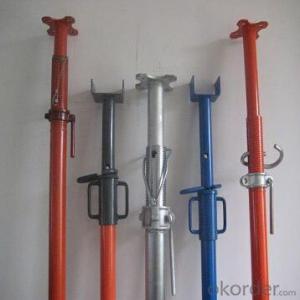Climbing Formwork
- Loading Port:
- China Main Port
- Payment Terms:
- TT OR LC
- Min Order Qty:
- -
- Supply Capability:
- -
OKorder Service Pledge
Quality Product, Order Online Tracking, Timely Delivery
OKorder Financial Service
Credit Rating, Credit Services, Credit Purchasing
You Might Also Like
The power of the Autoclimbing Formworkis the hydraulic system, whichincludes theoil cylinder and two commutators etc. Thecommutators can control the climbing of climbingrail and the bracket. The steel rail
andthe bracket can inner-climbing, so thewhole system will climb upsteadily.
Cranesare not needed during the constructing. It is easy tooperate, highly efficient and safe. It is thebest choice for the construction of highbuildings and bridges.
Characteristics
Safety:
1.Thesystem can climbintegrallyor separately.
2.Theclimbing process is steady,synchronousand safe.
3.Excellentoperating platformhandrailand aislecanbe liftedtogetherwith the formwork.
4.Theclimbing speed is quick, which can shorten the construction period and reduce the construction cost.
- Q: Are steel props reusable or disposable?
- Steel props are reusable.
- Q: Can a steel prop be used in combination with other support systems?
- Combining other support systems with a steel prop is possible. A steel prop, also known as an adjustable steel prop or acrow prop, is frequently utilized in construction and building projects to provide temporary support to walls, ceilings, beams, and other structures. Its design allows for easy height adjustments to meet project requirements. For more substantial or intricate structures, a single steel prop may not suffice in providing enough support. Consequently, it is often necessary to combine steel props with other support systems to ensure the stability and safety of the construction. Examples of combining steel props with other support systems include: 1. Scaffolding: Steel props can be used in conjunction with scaffolding systems to offer added support to the scaffolding structure. This proves particularly valuable when working at heights or when the scaffolding must bear heavier loads. 2. Formwork: During the pouring and curing process of concrete structures, such as walls or columns, steel props can be used to support the temporary formwork. The steel props help distribute the weight of the concrete and prevent the formwork from collapsing. 3. Shoring: By combining steel props with shoring systems, support can be provided to excavation sites or unstable ground conditions. Shoring systems typically consist of vertical supports, like steel beams or timber piles, and the addition of steel props enhances the overall stability of the shoring structure. 4. Beam and column support: Steel props can also be utilized in combination with other structural elements, such as steel beams or columns, to offer additional support during construction or renovation projects. This is particularly common when reinforcing or repairing existing structures. In summary, using steel props in tandem with other support systems is a widespread practice in the construction industry. It allows for increased flexibility and adaptability in providing temporary support to various structures, ultimately ensuring the safety and stability of construction projects.
- Q: What are the potential aesthetic considerations when using steel props?
- When incorporating steel props, one must keep in mind various aesthetic factors. Firstly, the overall aesthetic of a space can be influenced by the appearance of the steel props themselves. Contemporary or minimalist designs may find the sleek and industrial look of steel props appealing. However, in traditional or rustic settings, steel props may clash with the desired aesthetic. In such cases, alternative materials or finishes may need to be considered to blend the steel props with the overall design scheme. The visibility of the steel props within the space is another aesthetic consideration. Depending on the design intent, some may prefer the steel props to be prominently displayed as a design feature, while others may prefer them to be discreetly hidden. Careful consideration should be given to the size, shape, and placement of the steel props to ensure they align with the desired aesthetic and do not detract from the overall visual appeal of the space. The surface finish and treatment of the steel props can also impact their aesthetic appeal. Steel props can be left in their raw state, showcasing a natural steel finish that adds an industrial and rugged charm. Alternatively, they can be painted or powder-coated to match the surrounding elements or achieve a specific color scheme. The choice of finish should harmonize with the overall aesthetic goals of the space and enhance its visual appeal. Lastly, the integration of steel props with other materials and elements in the design is an important aesthetic consideration. Steel props can be used alongside materials such as wood, glass, or concrete, and the combination of these materials must be carefully considered to achieve a cohesive aesthetic. The juxtaposition of steel with other materials can create interesting visual contrasts, but it is crucial to strike a balance and ensure that the combination enhances the overall aesthetic rather than creating a discordant visual effect. In conclusion, when using steel props, it is essential to consider their appearance, visibility, surface finish, and integration with other materials. By carefully evaluating these factors, designers can create a harmonious and visually appealing space that aligns with their aesthetic goals.
- Q: Can steel props be used for supporting temporary walkways over water bodies?
- Yes, steel props can be used for supporting temporary walkways over water bodies. Steel props are strong and sturdy, making them suitable for providing the necessary support and stability required for temporary walkways.
- Q: How do steel props contribute to the overall aesthetics of construction projects?
- Steel props, also referred to as scaffolding or shoring, are of utmost importance in construction projects. They not only serve functional and safety purposes but also greatly enhance the overall aesthetics of the structures being erected. Firstly, steel props provide the necessary support and stability required for workers to carry out their tasks safely and efficiently. They effectively distribute the weight of building materials and equipment, ensuring the structure's stability and security during the construction process. By maintaining the stability of the construction site, steel props facilitate the accurate placement of other architectural components, such as beams, columns, and walls. This precision is crucial in achieving a visually pleasing and well-organized end result. Furthermore, steel props contribute to the aesthetics of construction projects through their design and finish. They are available in various shapes, sizes, and colors, offering architects and designers the opportunity to select ones that perfectly complement the overall style and theme of the project. Regardless of whether it is a modern, industrial, or traditional design, steel props can be customized to seamlessly blend in with the building's aesthetics. Moreover, steel props can be utilized creatively to enhance the visual appeal of construction projects. They can be intentionally incorporated into the architecture, adding a unique and distinctive touch to the overall appearance of the structure. For instance, steel props can be employed to create visually striking arches, frames, or patterns, serving as focal points or adding visual interest to the building. Additionally, steel props contribute to the aesthetics of construction projects by enabling the utilization of sustainable materials and construction techniques. Steel is a highly durable and recyclable material, making it an environmentally-friendly choice for construction. By integrating steel props into the construction process, projects can showcase their commitment to sustainability while enhancing the visual appeal of the built environment. In conclusion, steel props are not merely functional components of construction projects; they also have a significant impact on the overall aesthetics. Their stability, design versatility, creative potential, and sustainability make them indispensable contributors to the visual appeal and quality of the final product. Whether it is their structural role or intentional integration into the design, steel props play a vital role in enhancing the aesthetics of construction projects.
- Q: Can steel props be used for supporting temporary awnings or canopies?
- Yes, steel props can be used for supporting temporary awnings or canopies. Steel props, also known as adjustable steel props or steel shore props, are commonly used in construction to provide temporary support to structures. They are adjustable in height and can be easily installed and removed as needed. When it comes to supporting temporary awnings or canopies, steel props offer several benefits. Firstly, steel props are strong and sturdy, capable of bearing heavy loads. This makes them suitable for supporting the weight of the awning or canopy, ensuring stability and safety. Additionally, steel props can be adjusted to the desired height, allowing for flexibility in the installation of the awning or canopy. This is particularly useful when dealing with uneven ground or varying heights of structures. With their adjustable feature, steel props can be easily modified to provide the necessary support and ensure a level and secure installation. Moreover, steel props are durable and weather-resistant, making them suitable for outdoor use. They can withstand various weather conditions, including wind, rain, and even snow, ensuring the awning or canopy remains in place and protected from damage. In conclusion, steel props are a reliable and versatile solution for supporting temporary awnings or canopies. Their strength, adjustability, and durability make them an ideal choice for providing stable and secure support to these structures.
- Q: Are steel props easy to install and dismantle?
- Yes, steel props are generally easy to install and dismantle. They are designed with adjustable features and are lightweight, making them quick and efficient to set up and take down. Additionally, steel props often have simple locking mechanisms and require minimal tools for assembly and disassembly.
- Q: Can steel props be used to support beams or columns?
- Yes, steel props can be used to support beams or columns. Steel props are adjustable and temporary supports that are commonly used in construction to provide temporary bracing and support to beams or columns during various stages of construction or renovation. They are designed to be strong and stable and can be easily adjusted to provide the required support.
- Q: Can steel props be used in the construction of temporary road barriers?
- Yes, steel props can be used in the construction of temporary road barriers. Steel props are strong and durable, making them suitable for supporting and securing temporary road barriers in construction projects or during road maintenance. Their stability and load-bearing capacity make them an effective choice for ensuring the safety and stability of temporary road barriers.
- Q: Are steel props suitable for use in the construction of stadiums?
- Steel props, also known as steel shoring or steel acrow props, are an ideal choice for constructing stadiums. They are commonly used in construction projects to provide temporary support to various structures, including stadiums. The suitability of steel props in stadium construction stems from several advantages they offer. To begin with, steel is a robust and long-lasting material that can endure heavy loads and provide dependable support. This is crucial in stadiums, as they often have large spans and need to bear the weight of numerous spectators. Moreover, steel props are adjustable, allowing for precise and flexible support during the construction process. This adjustability feature is particularly valuable in stadium construction, where different areas may require varying levels of support as the project progresses. Furthermore, steel props are easy to install and dismantle, which enhances their suitability for stadium construction. Given the typically tight schedules of stadium construction projects, the ability to quickly install and remove props can save time and ensure efficient progress. Additionally, steel props can be reused in different construction projects, making them a cost-effective choice for stadium construction. Since stadiums are usually large-scale projects, the ability to reuse props in subsequent projects can significantly reduce costs and maximize return on investment. In conclusion, steel props are an excellent choice for constructing stadiums due to their strength, adjustability, ease of installation and dismantling, as well as cost-effectiveness. These qualities make steel props a reliable and efficient option for providing temporary support during stadium construction.
Send your message to us
Climbing Formwork
- Loading Port:
- China Main Port
- Payment Terms:
- TT OR LC
- Min Order Qty:
- -
- Supply Capability:
- -
OKorder Service Pledge
Quality Product, Order Online Tracking, Timely Delivery
OKorder Financial Service
Credit Rating, Credit Services, Credit Purchasing
Similar products
Hot products
Hot Searches
Related keywords
